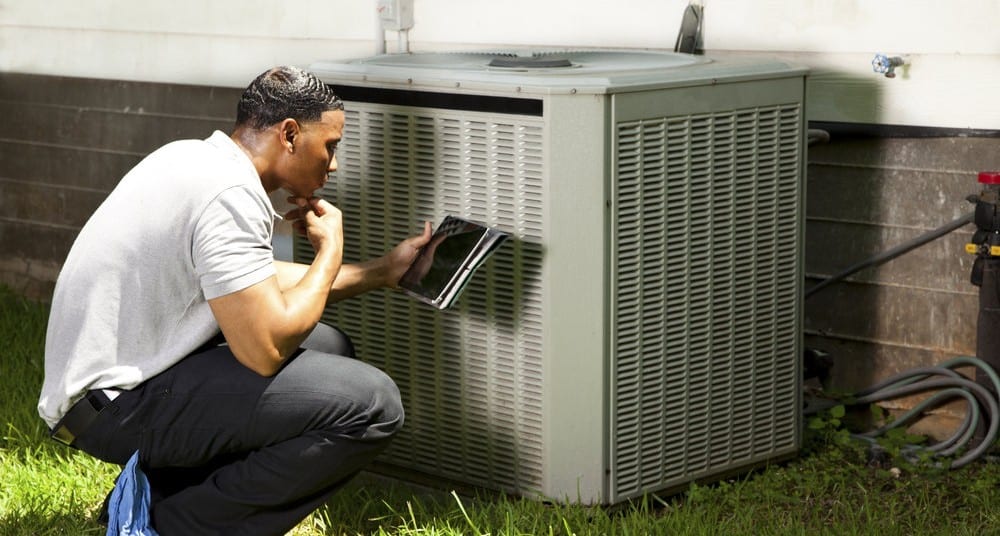Three Trends To Watch In The HVAC/R Industry

As the HVAC/R industry reacts to changes in environmental regulations and digital advancements, experts throughout the industry are weighing in on where the industry is heading.
At YELLOW JACKET, we’re always innovating so we can offer our customers the latest, cutting-edge technology to meet the demands of our changing industry. That said, we invited two YELLOW JACKET experts, Michael Lanners, Vice President of Domestic Sales and Marketing, and Karl Johnson, Director of Engineering, to share their viewpoints about three trends that they believe are re-shaping the HVAC/R industry.
1. Refrigerants and the Environment: The industry, as a whole, is still concerned about the chemicals used in refrigeration units and their impact on the environment, specifically, ozone depletion.
“As HCFC-22 (hydro chlorofluorocarbon, also known as R-22), which has long been the most common refrigerant, is being phased out in the U.S. due to its high potential to exacerbate ozone depletion,” said Lanners, “there still remains a fair amount of debate as to what will replace it.”
R-22 is a greenhouse gas that contributes to ozone depletion as it leaks. There is now an agreement to end the use of R-22 by the year 2020. In order to make this transition, R-22 must be recovered and recycled, reclaimed or destroyed. After the year 2020, chemical manufacturers will no longer be allowed to produce R-22 to service existing air conditioners and heat pumps.
As R-22 is being phased out, manufacturers of residential air conditioning systems are coming out with equipment that offers ozone-friendly refrigerants, or with different types of systems all together. For example, noted Lanners, in Europe and Asia, carbon dioxide heat pumps are increasing in popularity. Other systems are being developed with propane. In the U.S., one manufacturer has introduced a refrigeration system that uses EPA-recognized chlorine-free R-410A refrigerant. Because R-410A contains no chlorine, it is considered ozone-friendly.
“So the outcome of all of this, is that additional contractor training and certification protocols will be needed to ensure that professionals are prepared to service these new systems, whatever customers decide to install,” Lanners said. “And, it’s a safe bet, that as more government units impose tougher environmental regulations in the years ahead in reaction to climate change, that HVAC/R systems will become more environmentally friendly and more fuel efficient, but also more complex.”
2. Increased efficiency and safety through mobile and digital tools: People are becoming more comfortable and reliant on their smartphones. Over the last few years, smartphones earned a spot on the tool belts of most modern HVAC/R technicians – and not just to take service calls.
With the help of new tools, such as the YELLOW JACKET ManTooth on the market today, industry professionals are able to get more jobs done with more efficiency than ever before.
“For example,” noted Johnson, “there are probably more than 170 different HVAC/R systems being used on all types of buildings. Today’s HVAC/R technician truly is an artist in servicing all of these types of systems. But digital technology such as the ManTooth can recognize any of these systems and cut down on the training and service time.”
Technicians now have the ability to communicate from the office to the jobsite and they no longer need to worry about traveling in between jobs to receive and input data. Plus, many systems are set up with preventive alerts, so that techs can perform maintenance checks without traveling to a site.
“Digital technology also is reducing the weight and size of the servicing equipment,” Lanners added. “Every pass up and down a ladder is an accident waiting to happen. So digital technology will, as a secondary benefit, make the profession safer.”
3. A rise in e-commerce: The popularity of e-commerce and online shopping continues to grow year after year, in many different markets, including HVAC/R.
“We’re seeing a switch in the way technicians are buying their HVAC/R tools. There’s a definite trend in e-commerce where technicians are buying online through distributors,” said Johnson.
With a rise in e-commerce, customers now have better access to promotions, product descriptions and reviews. It’s easier than ever to make a purchase via mobile devices since it requires only a single-click to checkout with a seamless flow of payment and shipping information.
“More and more technicians are skipping a visit to their local HVAC/R distributor and buying online,” Lanners added. “This might be an easier alternative, but it’s important that buyers know that local distributors are a trusted source who can offer guidance in selecting the best quality products for the job.”
